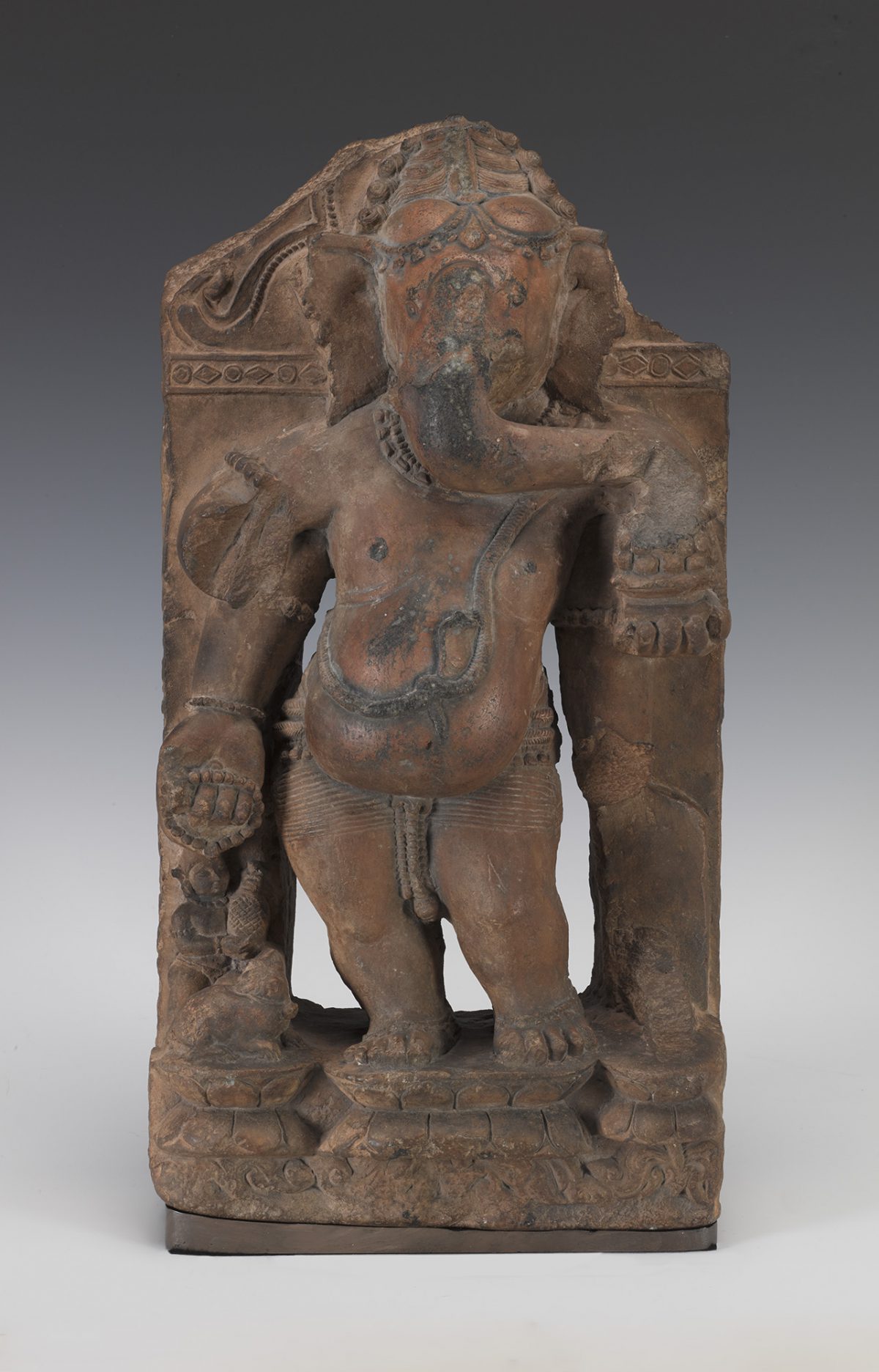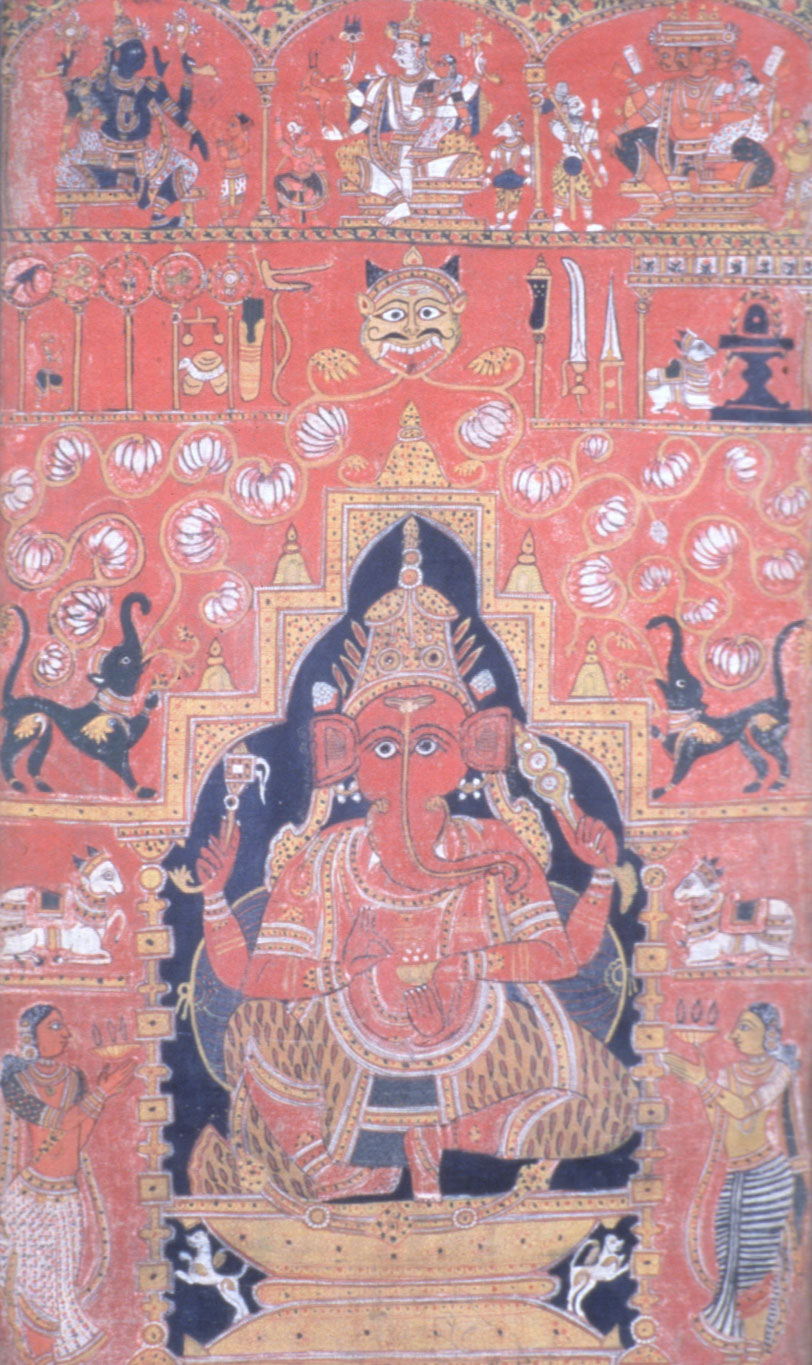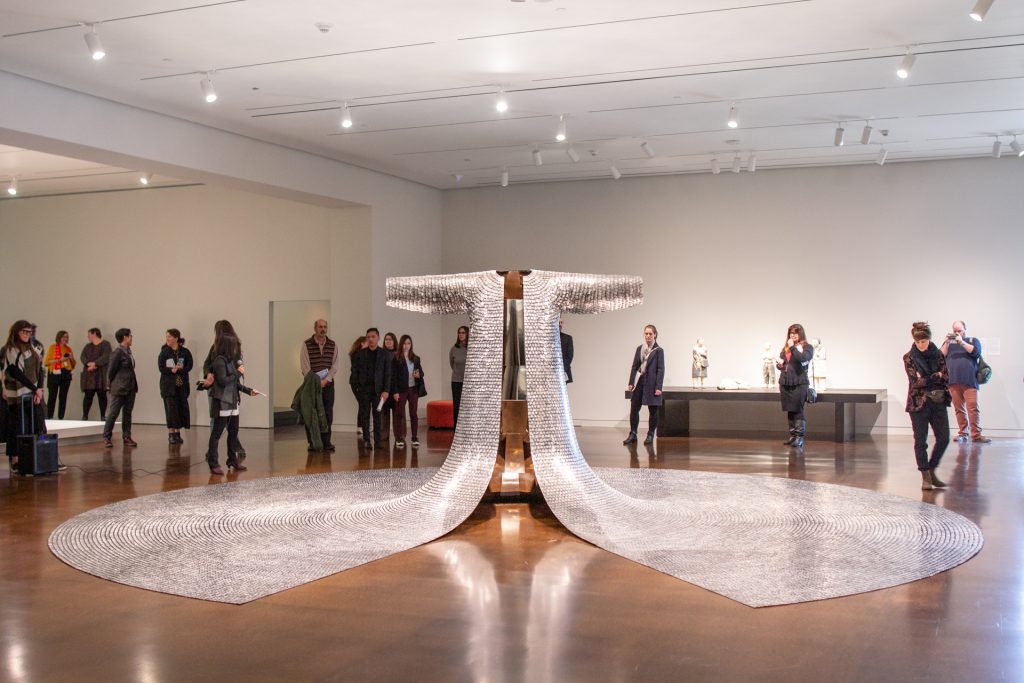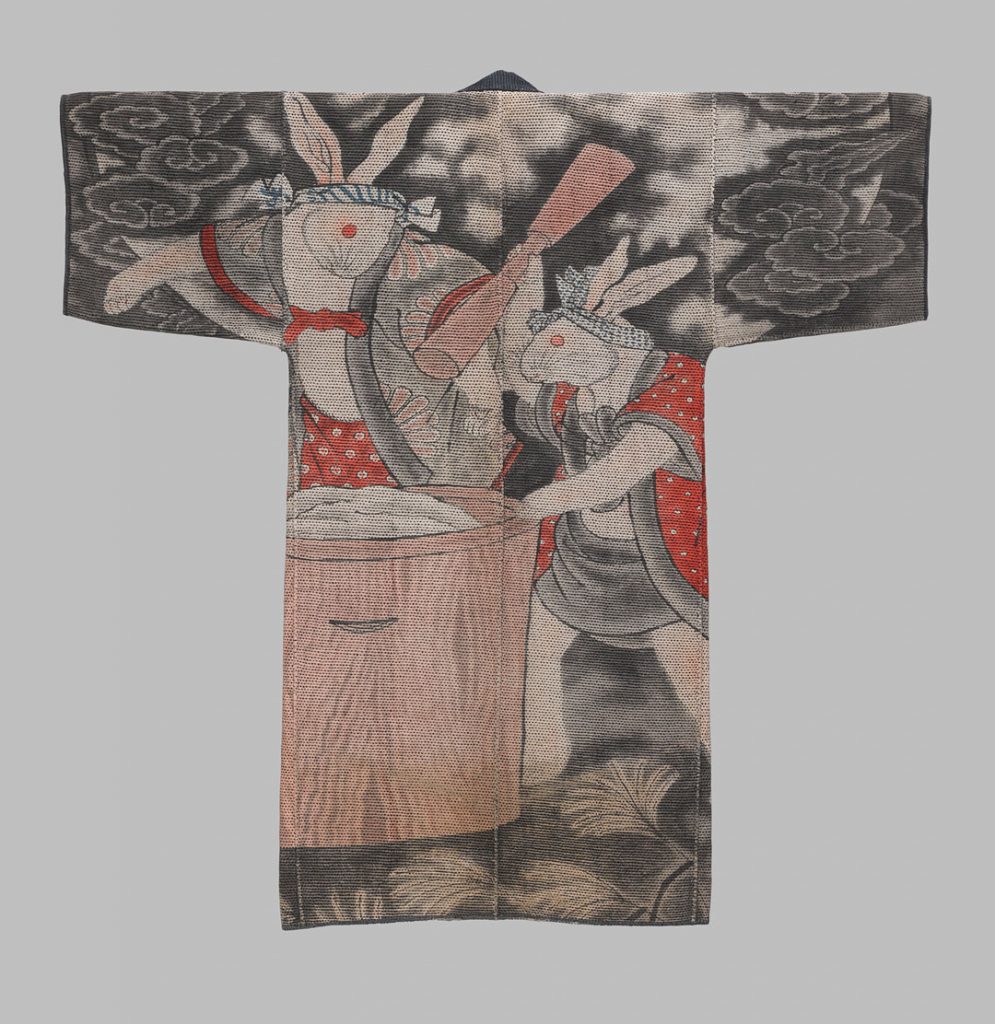Virtual Tour with Nana
Next in our series of virtual tours from Suzanne Ragen, aka Nana, we’ll be looking at an ancient Hindu sculpture and a Chinese sculpture from the 14th century. A SAM docent since 1965, Ragen began writing what she calls Nana’s Art History 101 for her grandchildren when the Asian Art Museum had to close for the safety of the public in March 2020. She recently started to share these virtual tours of SAM’s original home with us and we hope you enjoy them!
Ganesh, Remover of Obstacles and Lord of Auspicious Beginnings
Do you remember our first object, the Indian Story Scroll Cloth that featured the Hindu god Ganesh? He starts the story on that scroll because he is the God of Auspicious Beginnings, which means the story gets off to a good start.
This stone sculpture of Ganesh was located in a niche of a Hindu temple wall. In Hinduism, there are three main gods: Brahma has four heads and is the creator of pretty much everything; Vishnu often wears a top hat and is blue and comes to earth to help when needed in the form of nine different avatars; and Shiva who is the destroyer and can end the world and then you start all over again.
This Ganesh is connected to Shiva, we know that because the snake across his round belly is Shiva’s snake. When you look at Ganesh, what’s the first thing you notice? For me, his most striking feature is his elephant head. He also has four arms, a big belly, wears jewelry, and a crown. You might notice his candy dish in his left hand (he loves candy). What do you see near his right foot? That’s Mooshika, his rat sidekick who helps Ganesh trample down or wiggle through obstacles.
Why do you think he has an elephant head? The reason starts with Shiva and his wife Parvati, who live in a big, fancy house. Shiva is gone a lot, destroying things and Parvati misses him. One day when Shiva is gone Parvati makes a child out of clay to keep her company and breathes life into him. Once she goes to take a bath and tells her child, “Don’t let anyone in the house!” But Shiva comes home unexpectedly. Ganesh stops him and says “You can’t come in!” This makes Shiva so angry that he takes his sword and cuts off Ganesh’s head.
Parvati comes out and says, “How terrible! You have cut off the head of our child!” Shiva realizes the situation and tells his servant to go to the market and bring back the first head he sees. It is an elephant. Shiva places the elephant head on his child’s body. Ganesh comes back to life and in Hindu mythology, stays as a helper to his father and a good son to his mother.
Many Hindus pray to Ganesh for good luck when they set a new goal. After hearing this story, what do you think is lucky about Ganesh?
Dragon Tamer Luohan
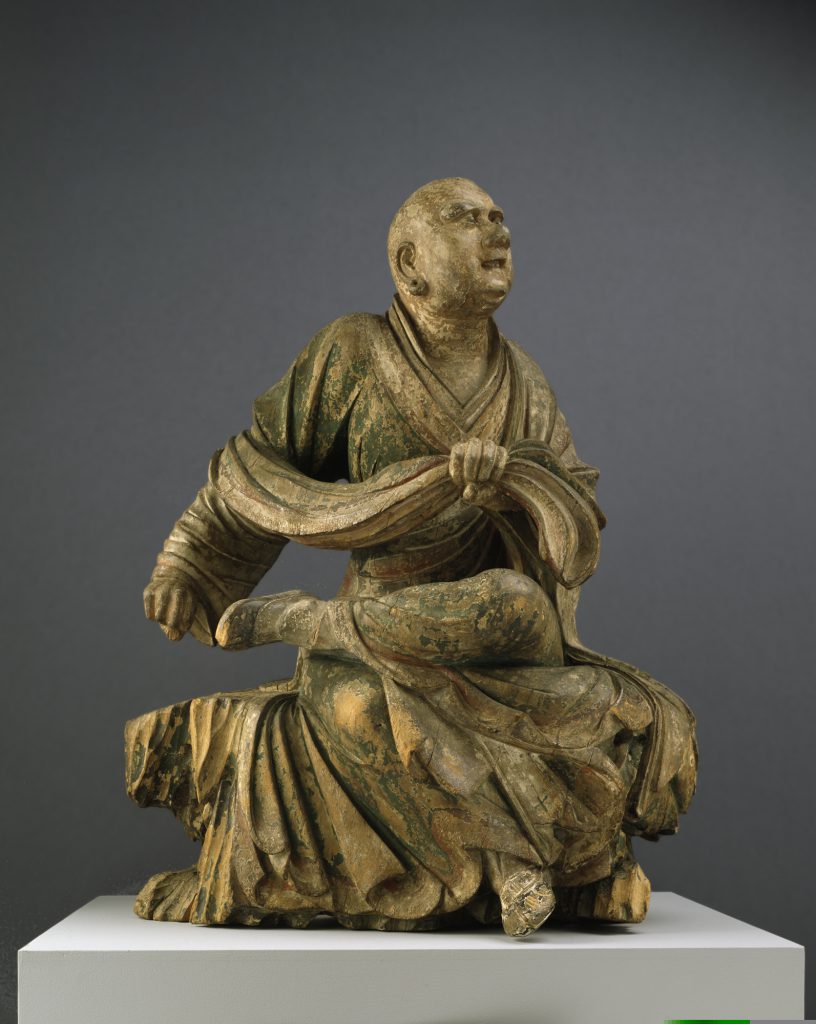
This Chinese wood sculpture from the 14th century came to the Seattle Art Museum soon after it opened its doors in 1933. How do I know this information? I looked at the label! If you look at the last numbers on any label (no matter what museum you go to), you’ll see there are a series of numbers. The numbers before the first period tell you what year the museum acquired the work, after the period is the number in which the object came into the collection that year. This is called the accession number. The accession number for this object is 36.13. This means that the object was acquired in 1936 and it was the 13th object acquired that year.
For the past 84 years this object was titled Monk at the Moment of Enlightenment. While the museum was closed for a recent renovation and expansion, our Chinese curator was able to examine it very carefully, using medical equipment like x-rays and CT scans, as well as looking closely. We can do that, too.
What we discovered from the scans is that the figure is hollow, made up of five different pieces of wood, held together with long iron pins, and was painted in reds and greens with a topcoat of gold, most of which has worn off. The curator was able to remove a panel in his back and found a single Chinese character inscribed inside that the museum had never seen before! It is part of the name for the Dragon Tamer Luohan. Luohans are Buddhist monks and this one’s particular job was to control the Dragon King. The Chinese believed that rainfall was controlled from the clouds by the Dragon King, so farmers would pray to this Luohan for the right amount of rain for their crops. Because of his size (more than three feet) and quality, it is thought that he was originally in a temple in Beijing.
The other big surprise that was found inside him was a mud wasp nest in his head! It must have been there for 800 years. A fragment of a wasp was sent to a UW entomologist, who was able to determine its species.
He is sitting on a tree stump, his body is twisted, legs with one foot touching the ground and the other crossed over that knee. He is grasping his robe in one hand and probably held a pail or a pearl in his other hand. He is looking upward at the sky, communicating with the Dragon King for more or less rain to fall. He seems totally animated with his swirling robes and vigorous body language. Notice his elongated pierced ear lobes, a symbol of the Buddha, who began life so wealthy that he wore heavy gold earring which stretched his ears.
Many years ago I was leading a high school group on a tour and we were talking about enlightenment and what it is? (This was when he had his first title). I suggested that it might be what happens when you are puzzling over a math problem and the symbols and numbers are just making no sense. You keep looking at them and suddenly they fall into place. Eureka! Enlightenment! When I said that, I snapped my fingers, and at that moment there was a minor Seattle earthquake. The guards came and rushed us into a doorway. I did feel a certain odd sense of power.
– Suzanne Regan, SAM Docent
